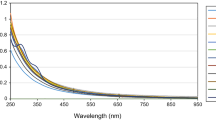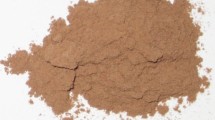Conclusion
Borates are clearly multi-functional coatings additives in the truest sense. Wood coatings can benefit from the biostatic, tannin stain resistance and flame retardant properties of borates. In addition, protection in storage is carried over into service and consequently borates can offer extremely cost effective solutions for the production of high performance coatings. Just one example, if zinc borate were being used for tannin stain resistance, it is unnecessary to use a separate dry film fungicide, in-can preservative or in-can corrosion inhibitor.
Coupled with the fact that borates have diverse physical characteristics, in particular distinct aqueous solubilities and pH characteristics (anywhere between pH 4 and 11), it is possible to match the formulation environment and avoid incompatibility and stability problems. Other useful characteristics include their low effect on the optical properties of the dry paint film and, unlike certain organic additives, zinc borate will not alter the transmission properties of transparent coatings; so important at a time when semi-transparent woodstains are gaining popularity.
Increasingly the coatings industry is being limited in the additives it can use; either because of specific product restrictions, a general trend to water-borne technology or because of rising raw material costs. It can be concluded from data reviewed here that the borates offer an environmentally non-harmful, safe and cost-effective alternative to the coatings formulator.
Similar content being viewed by others
References
Allen AW, A comparative study of the bactericidal values of twenty-one commonly used antiseptics,Arch. Surg.,19, 512–517, 1929.
Anon,Borogard ZB, In-can preservative and fungicide. US Borax Service Bulletin No. 302, 1993.
Anon,Borogard ZB, Tannin stain blocking, US Borax Service Bulletin No. 303, 1993.
Anon,Weathershield Aquatech Woodstain, Dulux Trade Information Sheet 615, 1994.
Anon, Durability of wood and wood-based products — Performance of preventive wood preservative as determined by biological tests — Part 1: Specification according to hazard class, BS EN 599-1: 1997.
Anon, Fire tests on building materials and structures. Part 7. Surface spread of flame tests for materials, BS 476: Part 7: 1997. British Standards Institution.
Bellingham F, Zinc borate in intumescent paints,Polymers Paint Colour Journal, 1992.
Fort DJ, Adverse effects of low boron exposure on reproduction, development and maturation in Xenopus laevis, Fifth conference of the International Society for Trace Element Research in Humans (ISTERH), Lyon, France, 1998.
Kroschwitz JI,Kirk-Othmer Encyclopaedia of Chemical Technology, John Wiley and Sons, 4th Edition, 1992.
Lloyd JD, Borates and their biological applications, Proceedings of the Annual Meeting of the Society for Industry Microbiology, 1996.
Lloyd JD, International status of borate preservative systems, Proceedings of the Second International Conference on Wood Protection with Diffusible Preservatives,Forest Products Research Society, pp 45–54, 1997.
Lloyd JD and Manning MJ, Developments in borate preservation technology,Record of the Annual Convention of the British Wood Preserving Association, 1995.
Quill K and Schubert D, Zinc borate in water-borne coatings, Creative Advances in coatings and ink technology: the impact of the environment,PRA/OCCA symposium, 1992.
Schoeman MW, Improvement of the microbial resistance of painted wood, Keynote paper to the COST Action E2 Meeting, Santarem, Portugal, 1996.
Schoeman MW and Lloyd JD, International standardisation: a hypothetical case study with stand-alone borate wood preservatives,Internat. Res. Group on Wood Pres., Doc. No. IRG/WP/98-20147, 1998.
Schoeman MW Lloyd JD and Manning MJ, Movement of borates in a range of timber species at various moisture contents,Internat. Res. Group on Wood Pres., Doc. No. IRG/WP/98-30181, 1998.
Schubert DM, Multi-functional zinc borate-based anti-corrosive pigment,Modern Paint and Coatings, 1992.
Author information
Authors and Affiliations
Rights and permissions
About this article
Cite this article
Schoeman, M.W., Lloyd, J.D. The role of boron-based additives in exterior wood coatings. Surface Coatings International 82, 124–126 (1999). https://doi.org/10.1007/BF02720108
Issue Date:
DOI: https://doi.org/10.1007/BF02720108




